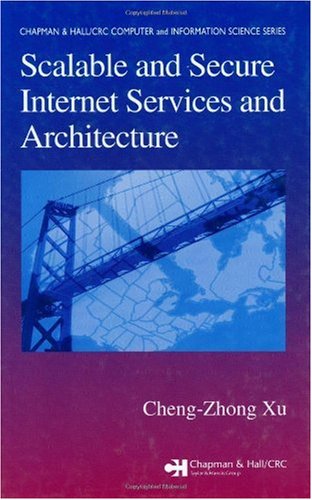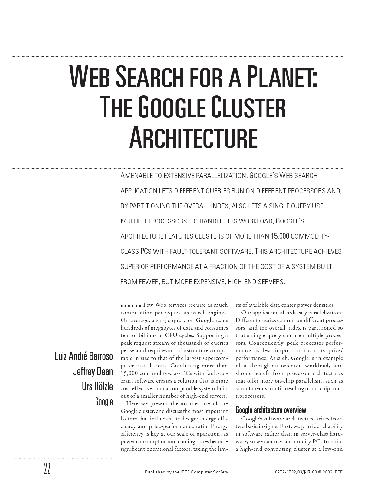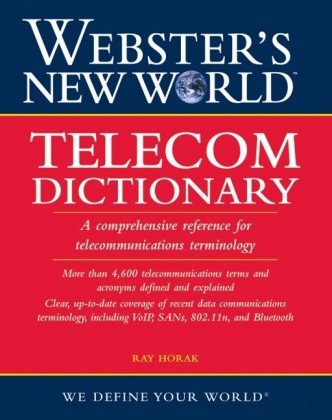Cheng-Zhong Xu9781584883777, 1584883774
Table of contents :
Scalable and Secure Internet Services and Architecture……Page 3
Preface……Page 6
Intended Audience……Page 7
Acknowledgments……Page 8
Contents……Page 9
References……Page 1
References……Page 15
1.1 Introduction……Page 16
1.2.1 Transparency……Page 17
1.2.2 Scalability……Page 18
1.2.3 Heterogeneity……Page 19
1.2.4 Security……Page 20
1.3.1 Search Engine……Page 22
1.3.2 On-line Shopping and E-Commerce……Page 23
1.3.3 Media Streaming Services……Page 24
1.3.4 Peer-to-Peer File Sharing……Page 25
1.4 Road Map to the Book……Page 26
References……Page 29
2.1 The Load Balancing Problem……Page 30
2.2 Server Load Balancing……Page 32
2.2.1 Layer-4 Load Balancer……Page 33
2.2.2 Layer-7 Load Balancer……Page 35
2.2.3 Load Balancing Policies……Page 37
2.2.4 Load Balancing with Session Persistence……Page 38
2.2.5 Distributed Approaches for Load Balancing……Page 40
2.3.2 DNS-Based Request Redirection……Page 41
2.3.3 Content Delivery Networks……Page 43
2.4.1 Objectives of Load Balancing……Page 45
2.4.3 What Information Is the Decision Based on……Page 46
2.4.4 Which Task Is the Best Candidate for Migration……Page 48
2.4.5 Where Should the Task Be Performed……Page 49
References……Page 50
3.1 Introduction……Page 51
3.2.2 Formulation of the Problem……Page 54
3.3.1 Video Replication……Page 56
3.3.1.2 Zipf Replication……Page 57
3.3.2 Smallest Load First Placement……Page 59
3.4 Service Availability Evaluation……Page 61
3.4.1 Impact of Video Replication……Page 63
3.4.2 Impact of Placement of Video Replicas……Page 64
3.4.3 Impact of Request Redirection……Page 65
3.5 Concluding Remarks……Page 66
References……Page 67
4.1 Introduction……Page 68
4.2.1 The Objectives……Page 70
4.2.2 Workload Classification……Page 71
4.2.3 QoS-Aware Server Resource Management……Page 72
4.3 QoS-Aware Admission Control……Page 73
4.4.1 Priority-Based Request Scheduling……Page 74
4.4.2 Processing Rate Allocation……Page 75
4.4.3 QoS-Aware Resource Management on Server Clusters……Page 78
4.5 Content Adaptation……Page 80
References……Page 82
5.1 Introduction……Page 83
5.2 Bandwidth Allocation for Differentiated Streaming Services……Page 85
5.2.1 Service Differentiation Models and Properties……Page 86
5.2.2 Network I/O Bandwidth Allocation……Page 87
5.3 Harmonic Proportional-Share Allocation Scheme……Page 88
5.3.1 Proportional-Share Bandwidth Allocation……Page 89
5.3.2 Harmonic Proportional Allocation……Page 90
5.4 Implementation Issues……Page 92
5.5 Service Availability Evaluation……Page 94
5.5.1 Impact of Service Differentiation……Page 95
5.5.2 Impact of Differentiated Bandwidth Allocation……Page 97
5.5.4 Impact of Queueing Principle with Feedback Control……Page 101
References……Page 104
6.1 Introduction……Page 105
6.2.1 The Model……Page 107
6.2.2 Objectives of Processing Rate Allocation……Page 109
6.3 An Optimal Processing Rate Allocation Scheme……Page 111
6.4.1 A Simulation Model……Page 113
6.4.2 Effect on Service Slowdown……Page 115
6.4.3 Controllability of Service Differentiation……Page 120
References……Page 121
7.1 Introduction……Page 122
7.2 Slowdown in an M/GP/1 Queueing System……Page 123
7.2.1 Slowdown Preliminaries……Page 124
7.2.2 Slowdown on Internet Servers……Page 125
7.3 Processing Rate Allocation with Feedback Control……Page 126
7.3.1.2 Simulation Model……Page 127
7.3.1.3 Simulation Results……Page 128
7.3.2 Integrated Feedback Control Approach……Page 129
7.4 Robustness of the Integrated Approach……Page 132
7.5.1 Implementation of a QoS-Aware Apache Server……Page 134
7.5.2 QoS Guarantees in Real Environments……Page 135
7.6 Concluding Remarks……Page 137
References……Page 138
8.1 Introduction……Page 139
8.2 The Decay Function Model……Page 142
8.3.1 Resource Configuration……Page 146
8.3.2 Optimal Fixed-Time Scheduling……Page 147
8.3.3 Examples……Page 150
8.4 Performance Evaluation……Page 152
8.4.1 Capacity Configurations and Variances……Page 153
8.4.2 Decay Function versus GPS Scheduling……Page 155
8.4.3 Sensitivity to the Change of Traffic Intensity……Page 156
8.4.4 Quality-of-Service Prediction……Page 158
8.5 Concluding Remarks……Page 159
References……Page 160
9.1 Introduction……Page 161
9.2 Topological Model of DHT-Based P2P Systems……Page 162
9.2.1 A Generic Topological Model……Page 163
9.2.2.1 Hypercube-Based……Page 165
9.2.2.4 Constant-Degree DHTs……Page 166
9.3 Cycloid: A Constant-Degree DHT Network……Page 167
9.3.1 CCC and Key Assignment……Page 168
9.3.2 Cycloid Routing Algorithm……Page 170
9.3.3 Self-Organization……Page 171
9.3.3.2 Node Departure……Page 172
9.4.1 Key Location Efficiency……Page 173
9.4.2 Load Distribution……Page 175
9.4.3.1 Impact of Massive Node Failures and Departures……Page 178
9.4.3.2 Lookup Efficiency During Node Joining and Leaving……Page 180
9.5 Concluding Remarks……Page 182
References……Page 183
10.1 Introduction……Page 184
10.2.1 Architecture……Page 186
10.2.2 Neural Network-Based Semantics Model……Page 187
10.2.2.1 Perceptron……Page 188
10.2.2.2 Learning Rules……Page 189
10.3.1 Keywords……Page 190
10.3.2 NewsAgent Architecture……Page 191
10.3.3 Control of Prefetching Cache and Keyword List……Page 192
10.4 Real-Time Simultaneous Evaluation Methodology……Page 194
10.5.1 NewsAgent Training……Page 195
10.5.2 Effectiveness of Semantic Prefetching……Page 197
10.5.3 Effects of Net Threshold and Learning Rate……Page 199
10.6 Related Work……Page 201
10.7 Concluding Remarks……Page 203
References……Page 204
11.1 Introduction……Page 205
11.2.1 Migration……Page 208
11.2.2 Communication……Page 209
11.2.3 Naming and Name Resolution……Page 210
11.3.1 Security Requirements……Page 211
11.3.2 Agent Authentication……Page 212
11.3.3 Privilege Delegation and Agent Authorization……Page 213
11.3.4 Agent-Oriented Access Control……Page 214
11.3.5 Proof-Carrying Code……Page 215
11.4.1.1 Protection of Mobile Agents……Page 217
11.4.1.2 Secure Agent Communication and Navigation……Page 218
11.4.2 Integrity Detection……Page 219
11.4.3.1 Tamper-Proof Hardware……Page 220
11.4.3.2 Computing with Encrypted Functions……Page 221
11.4.3.3 Code Obfuscation……Page 222
11.5 A Survey of Mobile Agent Systems……Page 223
References……Page 226
12.1 Introduction……Page 227
12.2 Design Goals and Naplet Architecture……Page 228
12.2.1 Naplet Class……Page 229
12.2.2 NapletServer Architecture……Page 231
12.3.1 Primitive Itinerary Constructs……Page 234
12.3.2 Itinerary Programming Interfaces……Page 235
12.3.3 Implementations of Itinerary Patterns……Page 238
12.4.1 Mobile Agent Tracking Overview……Page 240
12.4.2 Naplet Location Service……Page 242
12.5.1 PostOffice Messaging Service……Page 243
12.5.2 NapletSocket for Synchronous Communication……Page 245
12.6 Security and Resource Management……Page 246
12.6.1 Naplet Security Architecture……Page 247
12.6.2.1 NapletMonitor……Page 248
12.6.2.2 Access to Local Services……Page 249
12.7 Programming for Network Management in Naplet……Page 250
12.7.1 Privileged Service for Naplet Access to MIB……Page 251
12.7.2 Naplet for Network Management……Page 252
References……Page 254
13.1 Introduction……Page 255
13.2.1 Syntax of MAIL……Page 257
13.2.2 Operational Semantics of MAIL……Page 260
13.3 Regular-Completeness of MAIL……Page 263
13.4.1 Itinerary Configuration and Safety……Page 265
13.4.2 Itinerary Safety Reasoning and Assurance……Page 267
References……Page 270
14.1 Introduction……Page 271
14.2.1 Access Control in Mobile Codes……Page 273
14.2.2 Agent Naming and Authentication in Naplet……Page 275
14.2.3 Naplet Access Control Mechanism……Page 278
14.3.1 Temporal Constraints……Page 281
14.3.2 Spatial Constraints……Page 283
14.4 Concluding Remarks……Page 285
References……Page 286
15.1 Introduction……Page 287
15.1.1 Related Work……Page 288
15.2.1 NapletSocket Architecture……Page 289
15.2.2 State Transitions……Page 290
15.3.1 Transparency and Reliability……Page 293
15.3.2 Multiple Connections……Page 296
15.3.3 Security……Page 297
15.3.4 Socket Hand-Off……Page 298
15.3.5 Control Channel……Page 299
15.4.1 Effectiveness of Reliable Communication……Page 300
15.4.2 Cost of Primitive NapletSocket Operations……Page 301
15.4.3 NapletSocket Throughput……Page 302
15.5.1 Performance Model……Page 304
15.5.2 Simulation Results……Page 306
References……Page 308
16.1 Introduction……Page 309
16.2.1 The Architecture……Page 311
16.2.2 Strong Mobility of Multithreaded Agents……Page 313
16.3 Distributed Shared Arrays for Virtual Machines……Page 315
16.3.1 DSA Architecture……Page 316
16.3.2 DSA APIs……Page 317
16.3.3 DSA Run-Time Support……Page 318
16.3.3.1 The DSA Cache Coherence Protocol……Page 320
16.4.1 Cost for Creating a Virtual Machine……Page 323
16.4.2 Cost for DSA Read/Write Operations……Page 324
16.4.3.1 LU Factorization……Page 326
16.4.3.2 FFT Application……Page 328
16.5 Concluding Remarks……Page 329
References……Page 330
17.1 Introduction……Page 331
17.2.1 M-DSA Architecture……Page 333
17.2.2 An Example of M-DSA Programs……Page 334
17.3.1 Performance Monitoring for Service Migration……Page 336
17.3.2 Service Packing and Restoration……Page 337
17.3.3 Computational Agent State Capture……Page 339
17.3.4 Service Migration: A Summary……Page 340
17.4.1 Resource Management and Migration Decision……Page 341
17.4.2 Security Protection……Page 342
17.5 Experiment Results……Page 343
17.5.1 Execution Time of LU and FFT on M-DSA……Page 344
17.5.2 Service Migration Overhead Breakdown……Page 346
17.5.3 Security Protection for Intercluster Communication……Page 347
17.6 Related Work……Page 348
References……Page 350
18.1 Introduction……Page 351
18.2 Reconfigurable Virtual Machine Model……Page 352
18.3.1 Migration Candidate Determination and Service Migration Timing……Page 355
18.3.2 Destination Server Selection……Page 357
18.4.1 Agent Migration Decision……Page 361
18.4.2 Interplay between Service and Agent Migration……Page 363
18.5 Simulation Results……Page 364
Table of Contents……Page 369
References……Page 370







Reviews
There are no reviews yet.